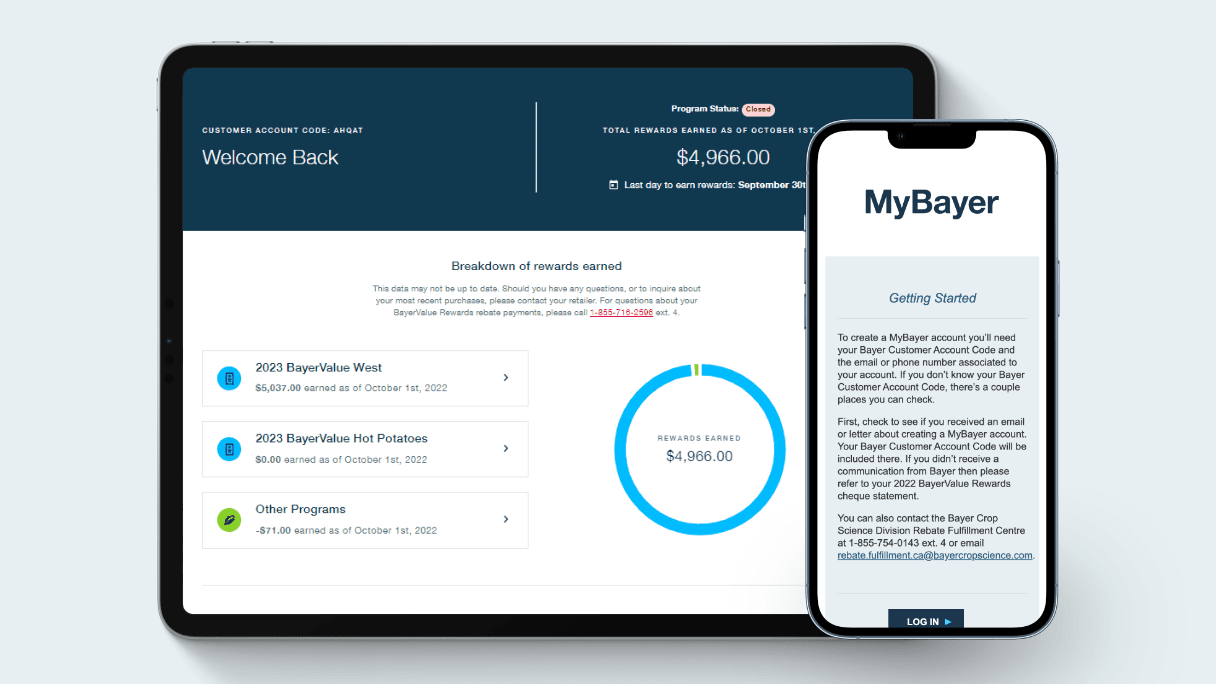4 READ-TIME
Fight Back Against Fusarium
January 23, 2019
If there’s one pathogen on every cereal grower’s radar – it’s Fusarium graminearum. Record levels of this pathogen in 2016 left high levels of inoculum in the soil in Eastern and Western Canada, and resulted in downgraded cereal crops and poor quality seeds for 2017. While the generally dry growing season in 2017 may have reduced potential damage, the pathogen is here to stay. It will continue to migrate westward and could rob you of your potential cereal yield and quality for years to come.

While there’s currently no single way to fully control Fusarium graminearum, you can decrease your risk and manage the disease with an Integrated Pest Management (IPM) plan. A successful IPM plan collectively employs multiple strategies, including cultural, genetic and crop protection solutions, to reduce the impact of fusarium. The goal is to break the disease triangle of inoculum, a susceptible host and weather conditions. It will keep the disease from destroying the value of your crop, while maintaining a high yield and high-quality seed for subsequent years.
Residue Management
Fusarium survives on crop residue and can take a long time to degrade depending on the cropping system. While most of the Prairies have moved away from aggressive tillage to help conserve soil moisture and soil structure, there is an argument for minimum tillage in areas with heavy fusarium pressure. If tillage is out of the question, there are other methods to manage crop residue. Fusarium survives on old cereal stalks and can take a long time to degrade. Finely chopped residue can help speed up decomposition and reduce the amount of inoculum in subsequent years.
Crop Rotation
A diverse crop rotation plan is always recommended for a number of reasons – it’s one way to reduce weeds, diseases and resistance concerns. It’s just as important to reduce fusarium inoculum in the soil. The challenge can be finding an economical long-term rotation, since the inoculum can live for several years in the soil and several other crops can be hosts for the pathogen. Just as important is the order of rotation. A four-year rotation that includes a pulse and oilseed is recommended.
Genetics
With some diseases – such as blackleg in canola or stripe rust in wheat – genetics can effectively help combat diseases. While there are currently no cereal varieties with complete resistance to fusarium, some are better than others. If fusarium is a concern in your area, choose certified seeds that are best suited to your geography that have the best fusarium-resistant genetics available. If using bin run seed, be sure to have your seeds tested to determine fusarium infection levels. This can be a challenge for durum growers, as a moderately susceptible variety is the best fusarium package currently available for this crop. Wherever possible, start with high quality seeds and good genetics.
Seed Treatments and Fungicides
While no seed treatment or fungicide will eliminate Fusarium graminearum entirely, the effective use of both can reduce the inoculum load and aid in the long-term management of this disease on your farm. A seed treatment will protect your crop against various root diseases, including those caused by Fusarium graminearum, thus allowing crops to get a healthy start. A seed treatment can also reduce soil-borne fusarium inoculum load. While all head-timing fungicides are labelled for suppression, a timely application of a proper fungicide can reduce FHB damage. Remember – spray carefully and monitor your sprayer speed, boom height, droplet size and nozzle angle for optimal coverage.
Integrated pest management will help address multiple disease concerns, not just fusarium, and reduce the risk of failure from a single approach. Learn more about how to fight fusarium and other costly diseases by visiting Grow your knowledge – fungicide education series as part of our fungicide education series. For higher yields and better quality, don’t just do one thing – do everything in the fight against FHB.
